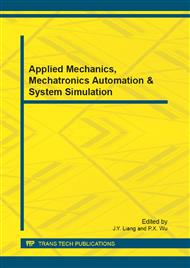p.572
p.577
p.581
p.586
p.591
p.596
p.601
p.606
p.611
Application of LINQ in Social-Security System Based on Three-Layer Structure
Abstract:
Through analyzing the development of Social-security system, the paper proposes one design proposal of the WEB system development based on LINQ. It uses three-tier structure to carry on the system development and carry on the operation for the database by LINQ. The applications of system prove that the system is operating well. It improves the management level of social-security information and it also confirms LINQ could greatly simplify the programming efficiency of system development and improve the access speed of database.
Info:
Periodical:
Pages:
591-595
Citation:
Online since:
September 2012
Authors:
Keywords:
Price:
Сopyright:
© 2012 Trans Tech Publications Ltd. All Rights Reserved
Share:
Citation:


